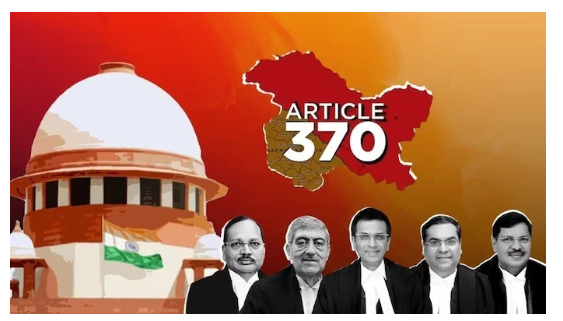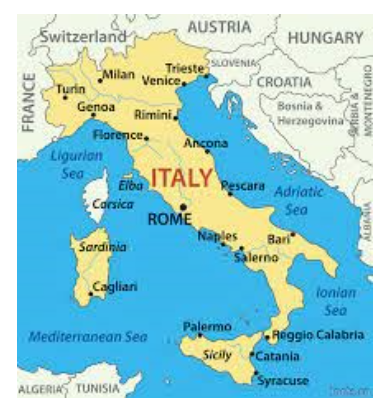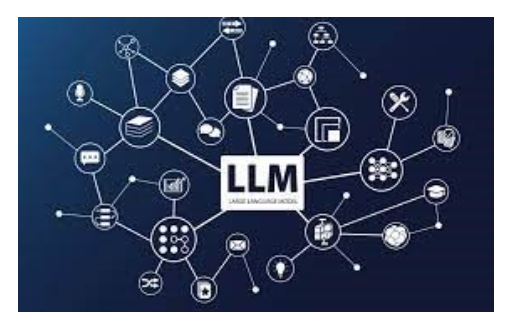Friday, 15th December 2023
Controlling SO2 Emissions from India's Coal Plants
In News: Less than 8% of India's coal power plants have adopted recommended SO2 emission reduction technology, according to a recent analysis by the Centre for Research on Energy and Clean Air (CREA).
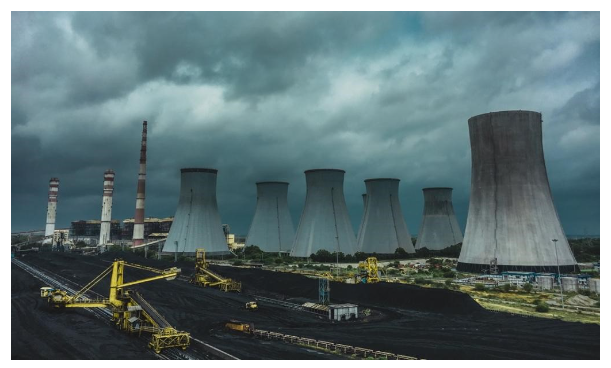
Technologies for SO2 Emission Reduction
- Flue Gas Desulfurization (FGD)
- FGD is the process of eliminating sulphur compounds from fossil-fuelled power stations' exhaust emissions by adding absorbents, which can remove up to 95% of sulphur dioxide.
- Circulating Fluidized Bed Combustion (CFBC)
- CFBC Boiler is an eco-friendly power facility that reduces pollutant discharge by injecting air and lime simultaneously for burning, transforming solid particles into a fluid-like state.
Key Study Findings
- Only 16.5 GW of coal plants in India have adopted FGDs and CFBC boilers, equivalent to 5.9 GW.
- 92% of the country’s coal power plants operate without FGDs.
- Blanket deadline extensions by MoEF&CC and CPCB contributed to the derailment of emission controls.
- Introduced in 2015, emission standards cover PM, SO2, NOx, and Hg (Mercury) emissions.
- India's energy generation capacity is 425 GW, with the thermal sector dominating at 48.6% from coal.
Categorization for FGD Installation
- MoEF&CC categorized coal-power plants in 2021 based on geography for deadline enforcement.
- Category A: Plants within a 10-km radius of NCR and cities with a million-plus population.
- Category B: Within a 10 km radius of critically polluted areas or non-attainment cities.
- Category C: Remaining plants with the longest deadlines.
Centre for Research on Energy and Clean Air (CREA)
- CREA is an independent research organization focused on air pollution trends, causes, health impacts, and solutions.
- It supports global efforts towards clean energy and air through scientific data and evidence.
Path Forward
- Accelerate FGD Implementation
- Prioritize and expedite FGD technology installation in coal-based power plants. Encourage adoption through incentives to ensure compliance with emission standards.
- Expand CFBC Implementation
- Provide support and incentives for wider CFBC technology adoption to enhance environmental sustainability.
- Stricter Enforcement and Monitoring
- Strengthen regulatory mechanisms for monitoring and enforcing emission standards. Implement strict penalties for non-compliance with deadlines and emission regulations.
- Research and Development (R&D)
- Invest in R&D for advanced technologies beyond current standards. Foster innovation in clean energy and emission control to make coal-based power generation more sustainable.
|
UPSC Previous Year Questions Prelims (2016) Q. Why is there a concern about copper smelting plants?
Select the correct answer using the code given below. (a) 1 and 2 only Ans: (b) Q2. With reference to furnace oil, consider the following statements:
Which of the statements given above are correct? (a) 1 and 2 only Ans: (d) Mains (2021) Q1. Describe the key points of the revised Global Air Quality Guidelines (AQGs) recently released by the World Health Organisation (WHO). How are these different from its last update in 2005? What changes in India’s National Clean Air Programme are required to achieve revised standards? Mains (2014) Q2. Environmental Impact Assessment studies are increasingly undertaken before a project is cleared by the Government. Discuss the environmental impacts of coal-fired thermal plants located at coal pitheads. |
Source: DTE
Global Status Report on Road Safety 2023: WHO
In News: The World Health Organization (WHO) recently published the Global Status Report on Road Safety 2023, unveiling crucial findings on global road traffic fatalities and safety.
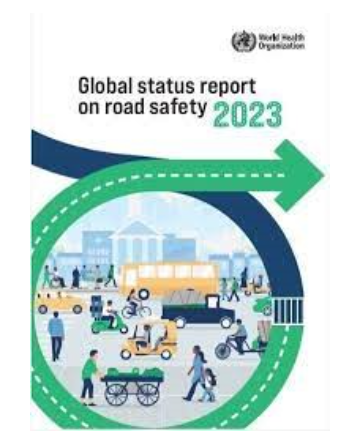
Key Report Highlights
- Global Road Traffic Fatalities
- Between 2010 and 2021, global road traffic deaths decreased by 5% annually, totalling 1.19 million fatalities.
- While 108 UN member nations reported a decline, India saw a 15% increase, reaching 1.54 lakh fatalities in 2021.
- Countries with Notable Reductions
- Ten countries achieved over a 50% reduction in road traffic deaths, with 35 others making significant progress (30% to 50%).
- Belarus, Brunei Darussalam, Denmark, Japan, Lithuania, Norway, Russian Federation, Trinidad and Tobago, United Arab Emirates, and Venezuela were among the top performers.
- Regional Distribution of Deaths
- The WHO South-East Asia Region accounted for 28% of global road traffic deaths, followed by the Western Pacific (25%), African (19%), Americas (12%), Eastern Mediterranean (11%), and European (5%) regions.
- Despite having only 1% of the world's motor vehicles, low- and middle-income countries bore 90% of the death burden.
- Vulnerable Road Users
- More than half (53%) of road traffic fatalities are vulnerable road users, including pedestrians (23%), riders of two- and three-wheelers (21%), cyclists (6%), and micro-mobility device users (3%). Pedestrian deaths increased by 3% to 274,000, while cyclist deaths rose by nearly 20% to 71,000 between 2010 and 2021.
- Safety Standards and Policies Progress
- Only six countries meet WHO best practice for all risk factors, and 140 countries have laws for at least one risk factor.
- Limited countries have legislation for key vehicle safety features and safety inspections.
- Call for Action
- With the global motor vehicle fleet expected to double by 2030, the report emphasizes the urgent need for robust safety regulations and infrastructure improvements, setting a baseline for the UN Decade of Action 2021–2030 target to halve road traffic deaths.
Road Safety Initiatives
- Global Initiatives
- Brasilia Declaration on Road Safety (2015)
- Signed at the second Global High-Level Conference on Road Safety, the declaration, to which India is a signatory, aims to halve global deaths and injuries from road traffic accidents by 2030.
- Decade of Action for Road Safety 2021-2030
- Adopted by the UN General Assembly, this initiative targets preventing at least 50% of road traffic deaths and injuries by 2030, aligning with the Stockholm Declaration for a holistic road safety approach.
- International Road Assessment Programme (iRAP)
- A registered charity dedicated to saving lives through safer roads.
- Brasilia Declaration on Road Safety (2015)
- India-specific Initiatives
- Motor Vehicles Amendment Act, 2019
- Enforces increased penalties for traffic violations, defective vehicles, juvenile driving, and establishes a Motor Vehicle Accident Fund for compulsory insurance cover.
- Carriage by Road Act, 2007
- Regulates common carriers, limiting their liability and declaring the value of goods delivered.
- Control of National Highways (Land and Traffic) Act, 2000
- Controls land within National Highways, right of way, and traffic movement.
- National Highways Authority of India Act, 1998
- Constitutes an authority for the development, maintenance, and management of National Highways.
- Motor Vehicles Amendment Act, 2019
Source: TH
Truth and Reconciliation Commission
In News: The Supreme Court upheld the 2019 Article 370 abrogation and proposed a Truth and Reconciliation Commission (TRC) to probe human rights violations in Jammu & Kashmir.
What is a Truth and Reconciliation Commission (TRC)?
Definition
A Truth and Reconciliation Commission, also referred to as a 'truth and justice commission' or simply a 'truth commission,' serves as an official mechanism to not only acknowledge but also unveil wrongdoings by a government or, at times, non-state actors.
Objective
The focus of a truth commission is on the past rather than ongoing events. It delves into a pattern of events that transpired over a specific period, engaging extensively with the affected population to gather information about their experiences. This temporary body is tasked with producing a final report.
Official Authorization
A truth commission is officially authorized or empowered by the state under review.
Nations with Established TRCs
- The two most prominent and impactful truth commissions are recognized to have been established in South Africa, Australia, and Canada. In India's vicinity, truth commissions have been instituted in Sri Lanka and Nepal.
- In 1995, South Africa's first post-apartheid government, led by President Nelson Mandela, established a TRC to uncover the truth regarding human rights violations during the decades of apartheid.
Article 370
Background
- Article 370 in the Indian constitution granted special status to Jammu and Kashmir, a region disputed by India, Pakistan, and China.
- Drafted by N Gopalaswami Ayyangar, a member of the Constituent Assembly of India, it was added to the constitution in 1949 as a 'temporary provision.'
Provisions
- Article 370 allowed the state to have its own constitution, flag, and autonomy over most matters, excluding defence, foreign affairs, and communications.
- Its basis lies in the Instrument of Accession signed in 1947 by the ruler of Jammu and Kashmir, Hari Singh, as a decision to join India following an invasion by Pakistan.
|
UPSC Previous Year Questions Mains (2016) Q. To what extent is Article 370 of the Indian Constitution, bearing marginal note “Temporary provision with respect to the State of Jammu and Kashmir”, temporary? Discuss The future prospects of this provision in the context of Indian polity. |
Source: IE
Food Security and Nutrition Regional Snapshot 2023
In News: The United Nations' Food and Agriculture Organisation (FAO) has released the Asia-Pacific Regional Overview of Food Security and Nutrition 2023, revealing that in 2021, 74.1% of Indians couldn't afford a nutritious diet.
Key Report Highlights
- Global Overview
- Undernourishment Trends
- In 2022, undernourishment in Asia-Pacific decreased to 8.4%, 12 million fewer people than 2021 but 55 million more than 2019.
- Regional Representation
- The region hosts 370.7 million undernourished people, constituting half of the global total.
- Southern Asia Dominance
- Southern Asia holds 314 million undernourished individuals, representing 85% of the region's total.
- Undernourishment Trends
- Regional Nutrition and Food Security (India)
- Affordability Challenges
- 74.1% of Indians couldn't afford a healthy diet in 2021, a slight improvement from 76.2% in 2020.
- Neighbouring Comparisons
- Pakistan faced 82.2%, and Bangladesh faced 66.1% challenges in accessing healthy food.
- Undernourishment Rate
- India reports 16.6% of the population as undernourished.
- Child Health
- Stunting affects 31.7% of children under five, with wasting prevalent in 18.7%.
- Women's Health
- 53% of women aged 15 to 49 had anaemia in 2019, posing risks to maternal and neonatal outcomes.
- Obesity Trends
- Adult obesity increased from 1.6% (2000) to 3.9% (2016).
- Affordability Challenges
Nutrition Indicators and Initiatives
- Exclusive Breastfeeding
- India's prevalence is 63.7%, surpassing the global average of 47.7%.
- Low Birthweight
- India reports the highest prevalence (27.4%) in the region.
Food and Agriculture Organization (FAO)
About FAO
- Specialized UN Agency
- FAO spearheads global initiatives to combat hunger.
- World Food Day
- Celebrated annually on October 16, marking FAO's founding anniversary in 1945.
- Location
- Based in Rome, Italy, alongside sister organizations World Food Programme and IFAD.
Initiatives and Publications
- GIAHS
- Globally Important Agricultural Heritage Systems.
- Desert Locust Monitoring
- FAO monitors the global Desert Locust situation.
- Codex Alimentarius Commission
- Responsible for FAO/WHO Food Standards Programme.
- International Treaty
- Adoption of the International Treaty on Plant Genetic Resources for Food and Agriculture in 2001.
Flagship Publications
- SOFIA-The State of World Fisheries and Aquaculture.
- SOFO-The State of the World's Forests.
- SOFI-The State of Food Security and Nutrition in the World.
- SOFA-The State of Food and Agriculture.
- SOCO-The State of Agricultural Commodity Markets.
|
UPSC Previous Year Questions Prelims (2016) Q. The FAO accords the status of ‘Globally Important Agricultural Heritage System (GIAHS)’ to traditional agricultural systems. What is the overall goal of this initiative?
Select the correct answer using the code given below: (a) 1 and 3 only Ans: (b) |
Source: TH
Kazhuveli Bird Sanctuary - Edukemy Current Affairs
In News: As the winter season begins, Kazhuveli bird sanctuary witnesses the arrival of hundreds of migratory birds.
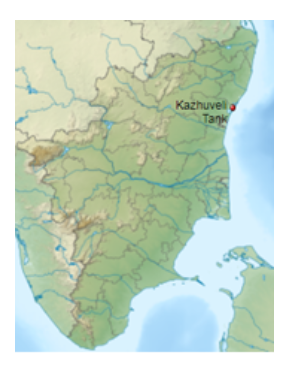
Overview of Kazhuveli Bird Sanctuary
- Situated in the state of Tamil Nadu, Kazhuveli Bird Sanctuary is positioned along the east coast adjacent to the Bay of Bengal.
- Regarded as a significant wetland on the Coromandel Coast, it stands out after Pulicat Lake.
- The sanctuary is intricately connected to the Bay of Bengal through the Uppukalli Creek and the Yedayanthittu estuary, attracting migratory birds on the Central Asian flyway for nesting.
- Designated as reserved land since 2001, the southern part of this wetland is listed among Tamil Nadu's 141 prioritized wetlands.
- Not only is Kazhuveli recognized as a wetland of international importance, but it also holds the potential to be designated as a Ramsar site.
- Kazhuveli boasts diverse habitats, encompassing sloping wetlands preferred by shorebirds, darters, and waders, as well as areas with floating vegetation and open grasslands that attract various bird species and fauna.
- The lake serves as a crucial feeding ground for long-distance migrants from the cold subarctic regions of Central Asia and Siberia, including Black-tailed Godwits, Eurasian Curlew, White Stork, Ruff, and Dunlin.
Source: TH
Anthrax Outbreak in Zambia: WHO Alert
In News: The World Health Organization (WHO) has recently documented a noteworthy anthrax outbreak in Zambia, signalling a concerning proliferation of the disease across nine provinces out of the country's ten.
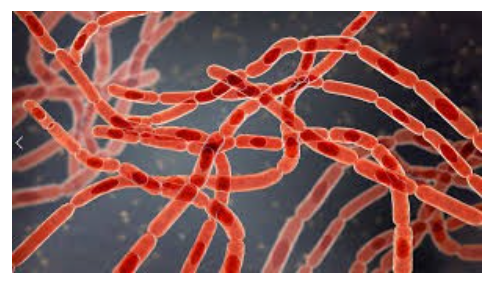
Anthrax Overview
- Anthrax is a highly contagious disease caused by the gram-positive, rod-shaped bacteria Bacillus anthracis.
- Primarily affecting animals like cows, sheep, and goats, as well as wild herbivores, humans can also contract the illness through contact with infected animals or contaminated animal products.
- Additionally, anthrax bacteria occur naturally in soil.
Symptoms of Anthrax
- The disease presents in three forms based on the route of infection: cutaneous, gastrointestinal, and inhalational.
- Cutaneous anthrax, the most prevalent form, is characterized by itchy bumps evolving into black sores, often accompanied by fever and muscle aches.
Diagnosis of Anthrax
- Identification of Bacillus anthracis in blood, skin lesions, or respiratory secretions through laboratory culture, PCR, or ELISA tests enables anthrax diagnosis.
- Although there isn't a specific test for anthrax exposure, public health investigations play a vital role in identifying potential cases.
Treatment and Prevention
Antibiotics such as ciprofloxacin, doxycycline, or levofloxacin are effective treatments for anthrax. Vaccines are also available for both livestock and humans as preventive measures.
Source: IT
Dragon Snakehead fish - Edukemy Current Affairs
In News: The inclusion of the Dragon Snakehead fish (Aenigmachanna gollum) in the International Union for Conservation of Nature (IUCN) red list suggests that it could encounter significant conservation difficulties.
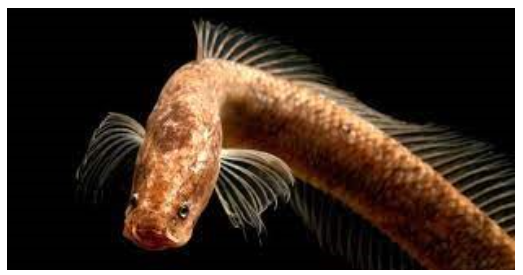
About the Dragon Snakehead Fish
- The Dragon Snakehead fish, dubbed 'living fossils' and named after a Lord of the Rings character, is primarily found in Kerala.
- Evolving around 120 million years ago, potentially alongside dinosaurs during the Jurassic period, its isolation in underground habitats suggests resilience to terrestrial extinction events.
Habitat and Distinct Features
- This species thrives in wetlands and adjacent paddy fields.
- With its dragon-like appearance, it gained popularity in the international aquarium pet trade and is considered a symbol of good luck in Far East countries.
Conservation Challenges
- Being a subterranean fish embedded within human-dominated landscapes poses challenges for conservation efforts.
- Threats include the use of pesticides and insecticides in paddy fields and declining groundwater quality, impacting the survival of the species.
Conservation Measures
- Recommendations for conservation include the protection of wetlands and regulations on pesticide and insecticide use due to habitat decline.
- Implementing these measures becomes crucial for preserving the Dragon Snakehead fish.
Conservation Status
- Listed as 'Vulnerable' on the IUCN red list and categorized under Schedule II of the Wildlife Protection Act (1972), the Dragon Snakehead fish faces challenges shared by other endangered fish species from Kerala, including Kryptoglanis shajii, Horaglanis abdulkalami, and Pangio bhujia.
Source: TH
Organization of Islamic Cooperation (OIC)
In News: India has declined to accept a statement issued by the Organization of Islamic Cooperation (OIC) concerning a Supreme Court ruling affirming the abrogation of Article 370
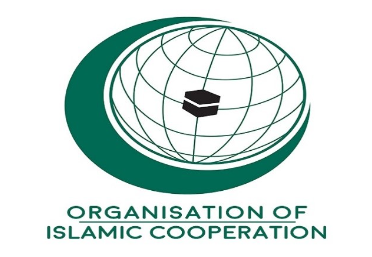
Overview of the Organization of Islamic Cooperation (OIC)
The Organization of Islamic Cooperation (OIC) stands as the world's second-largest intergovernmental organization, following the United Nations, boasting a collective population exceeding 1.8 billion.
Establishment and Historical Context
Formed in September 1969 following the criminal arson of Al-Aqsa Mosque in occupied Jerusalem, the OIC emerged from a pivotal summit in Rabat, Kingdom of Morocco.
Collective Voice and Objectives
- As the collective voice of the Muslim world, the OIC is dedicated to safeguarding their interests in economic, social, and political realms.
- Its overarching objectives include preserving Islamic values, defending national sovereignty, ensuring independence of member states, and contributing to global peace and security.
Membership and Headquarters
With a membership of 57 states spanning four continents, the OIC is headquartered in Jeddah, Saudi Arabia. Official languages include Arabic, English, and French.
Key Bodies
- Crucial bodies within the OIC structure include the Islamic Summit, the Council of Foreign Ministers (CFM), the General Secretariat, and the Al-Quds Committee.
- Additionally, there are three permanent committees focusing on science and technology, economy and trade, and information and culture.
Specialized Organs
- Specialized organs under the OIC banner include the Islamic Development Bank and the Islamic Educational, Scientific, and Cultural Organization.
- Various subsidiary and affiliate organs play vital roles in fostering cooperation among member states in diverse fields.
International Collaboration
The OIC collaborates with international mechanisms, governments, and civil society organizations, including specialized UN agencies, to address concerns impacting its member states and Muslims globally.
Source: TOI
Ranthambore National Park - Edukemy Current Affairs
In News: The administration of Ranthambore National Park intends to enforce rigorous monitoring of safari vehicles by incorporating Global Positioning System (GPS) trackers.
Ranthambore National Park Overview
- Location
- Situated in the Sawai Madhopur district of southeastern Rajasthan, Ranthambore National Park marks the convergence of the Aravali and Vindhya hill ranges.
- Initially, it served as the hunting grounds for the Maharajas of Jaipur and derives its name from the Ranthambore Fort nestled within its boundaries.
- The park was officially declared a national park on November 1, 1980, while the adjacent forests were named Sawai Man Singh Sanctuary and Keladevi Sanctuary.
- Landscape
- Characterized by rugged terrain, dense forests, lakes, and ancient ruins, Ranthambore offers a picturesque and diverse environment.
- Vegetation
- The park's vegetation features tropical dry deciduous and tropical thorn types, influenced by its hilly topography.
- Water sources are concentrated in narrow valleys and various lakes.
- Rivers and Lakes
- Bounded by the Chambal River in the south and the Banas River in the north, the park boasts several lakes, including Padam Talab, Raj Bagh Talab, and Malik Talab.
- Flora
- Dominating the flora is the 'Dhok' tree, constituting over three-fourths of the park's vegetation.
- Other prominent trees include Banyan, Pipal, and Neem.
- Fauna
- Ranthambore National Park is renowned for its flagship species, Panthera tigris tigris, the Indian or Bengal tiger.
- In addition to tigers, the park is home to diverse wildlife, including leopards, nilgai, wild boar, sambar, hyena, sloth bear, and chital.
Source: TOI
Vyommitra - Edukemy Current Affairs
In News: The Minister of Science and Technology has recently declared that India is poised to send Vyommitra, a female robot astronaut, into space as a crucial component of the ambitious Gaganyaan project.
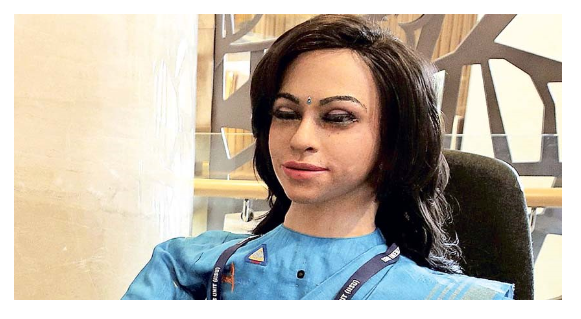
About Vyommitra
- Vyommitra, a fusion of the Sanskrit words Vyoma (Space) and Mitra (Friend), is a female robot meticulously crafted and developed by ISRO.
- This robot is intended to embark on unmanned test missions preceding the Gaganyaan human spaceflight endeavour.
- Referred to as a half-humanoid due to the absence of legs, Vyommitra exhibits the ability to bend forward and sideways.
- Beyond participating in uncrewed Gaganyaan missions, she is slated to accompany astronauts during manned missions as well.
Features
- This AI-enabled robot is engineered to withstand the rigors of flight, including vibrations and shocks.
- Resembling a human, Vyommitra possesses facial expressions, speech capabilities, and sight capabilities.
- Designed with the capability to monitor module parameters, issue alerts, and execute life support operations, Vyommitra is versatile.
- She can undertake various tasks such as operating switch panels and serving as a companion to astronauts.
- This includes engaging in conversations, recognizing astronauts, and responding to their inquiries.
Source: IT
Government Consultancy: Exploring Advantages and Disadvantages
In News: The consultancy firms wield excessive influence and power in shaping government decisions thus emphasizing the imperative for increased transparency and accountability.
Understanding Consultancy Firms
- Definition of Consultancy Firms
- Consultancy firms are businesses offering professional advice and solutions to organizations grappling with challenges beyond their immediate resolution.
- Expertise in Varied Fields
- These firms employ specialists in management, engineering, finance, healthcare, etc., providing services for a fee on specific projects or goals.
- Examples in India
- Prominent consultancy firms in India include Tata Consultancy Services, McKinsey & Company, and Deloitte.
Advantages of Consultancy Firms in Public Policy Making
- Specialized Knowledge
- Consultants bring domain-specific expertise crucial for effective program formulation in sectors like agriculture, transport, energy, and financial services.
- Flexibility and On-Demand Skills
- The dynamic nature of public policy challenges demands on-call, specialized technical skills provided by consultants.
- Diverse Perspectives
- External consultants contribute diverse skill sets and perspectives, enhancing problem-solving approaches for complex issues.
- Efficiency in Project-Specific Engagements
- Project-specific engagements offer a cost-effective and efficient solution for addressing specific government challenges without permanent increases in institutional load.
Challenges Posed by Consultancy Firms
- Depletion of Government Capabilities
- Heavy reliance on consultancy firms may lead to a decline in in-house government capabilities, making the government overly dependent on external expertise.
- Excessive Dependence and Mission Creep
- Government officials may become overly reliant on consulting teams, potentially expanding the scope of engagements beyond their original intent.
- Lobbying for Repeat Work and Policy Influence
- Consulting firms may exploit government connections for repeat work and attempt to influence policy decisions, raising concerns about accountability.
- Distortion of Public Policy Objectives
- Consultants' involvement in policy formulation may lead to misaligned priorities and recommendations that deviate from long-term public interests.
- Consultocracy and Diminishing Role of Public Servants
- The growing influence of consultants within government structures may diminish the traditional role of public servants.
- Risk of Corruption
- Collaboration between consulting firms and government activities may create opportunities for corruption, emphasizing the need for transparency and ethical practices.
The Way Forward
- Regulatory Safeguards
- Comprehensive regulations should ensure fairness and transparency in consultancy engagements, preventing rent-seeking behaviours.
- Disclosure of Value Added
- Mechanisms for consultants to disclose the value they add to public policy initiatives should be implemented for transparency, accountability, and public trust.
- Knowledge Transfer and Capacity Building
- Clear protocols for knowledge transfer from consultants to government officials should be established, emphasizing internal capacity building for long-term development.
- Stakeholders Involvement
- Engaging citizens and stakeholders through surveys and participatory methods ensures government policies are responsive, inclusive, and accountable.
Conclusion
While consulting firms play a vital role in modern governance, their involvement should be carefully regulated and transparent to enhance the quality and effectiveness of public service delivery.
|
UPSC Previous Year Questions Prelims (2008) Q. Which of the following are the public sector undertakings of the Government of India?
Select the correct answer using the code given below: Code: (a) 1 and 2 only Ans: d |
Source: IE
Share the article
Edukemy’s Current Affairs Quiz is published with multiple choice questions for UPSC exams
MCQ
Get Latest Updates on Offers, Event dates, and free Mentorship sessions.

Get in touch with our Expert Academic Counsellors 👋
FAQs
UPSC Daily Current Affairs focuses on learning current events on a daily basis. An aspirant needs to study regular and updated information about current events, news, and relevant topics that are important for UPSC aspirants. It covers national and international affairs, government policies, socio-economic issues, science and technology advancements, and more.
UPSC Daily Current Affairs provides aspirants with a concise and comprehensive overview of the latest happenings and developments across various fields. It helps aspirants stay updated with current affairs and provides them with valuable insights and analysis, which are essential for answering questions in the UPSC examinations. It enhances their knowledge, analytical skills, and ability to connect current affairs with the UPSC syllabus.
UPSC Daily Current Affairs covers a wide range of topics, including politics, economics, science and technology, environment, social issues, governance, international relations, and more. It offers news summaries, in-depth analyses, editorials, opinion pieces, and relevant study materials. It also provides practice questions and quizzes to help aspirants test their understanding of current affairs.
Edukemy's UPSC Daily Current Affairs can be accessed through:
- UPSC Daily Current Affairs can be accessed through Current Affairs tab at the top of the Main Page of Edukemy.
- Edukemy Mobile app: The Daily Current Affairs can also be access through Edukemy Mobile App.
- Social media: Follow Edukemy’s official social media accounts or pages that provide UPSC Daily Current Affairs updates, including Facebook, Twitter, or Telegram channels.


